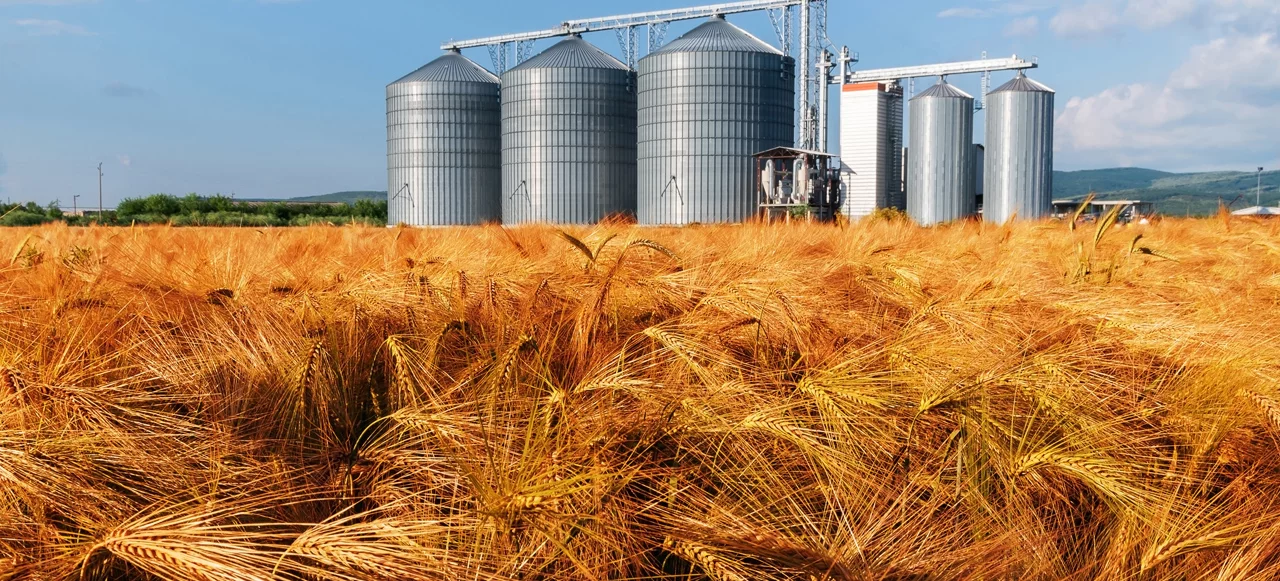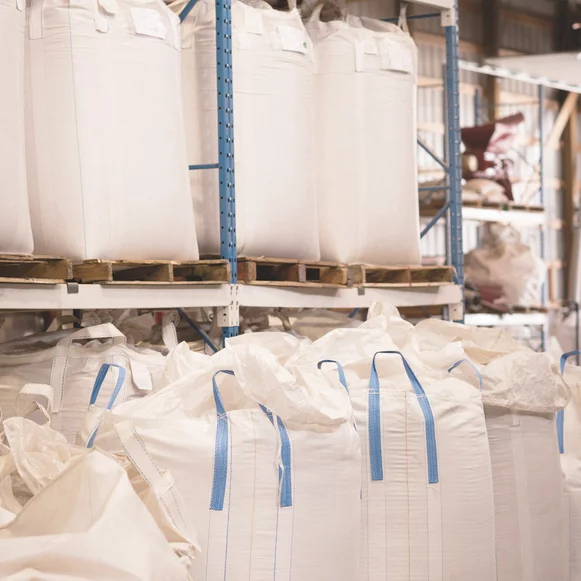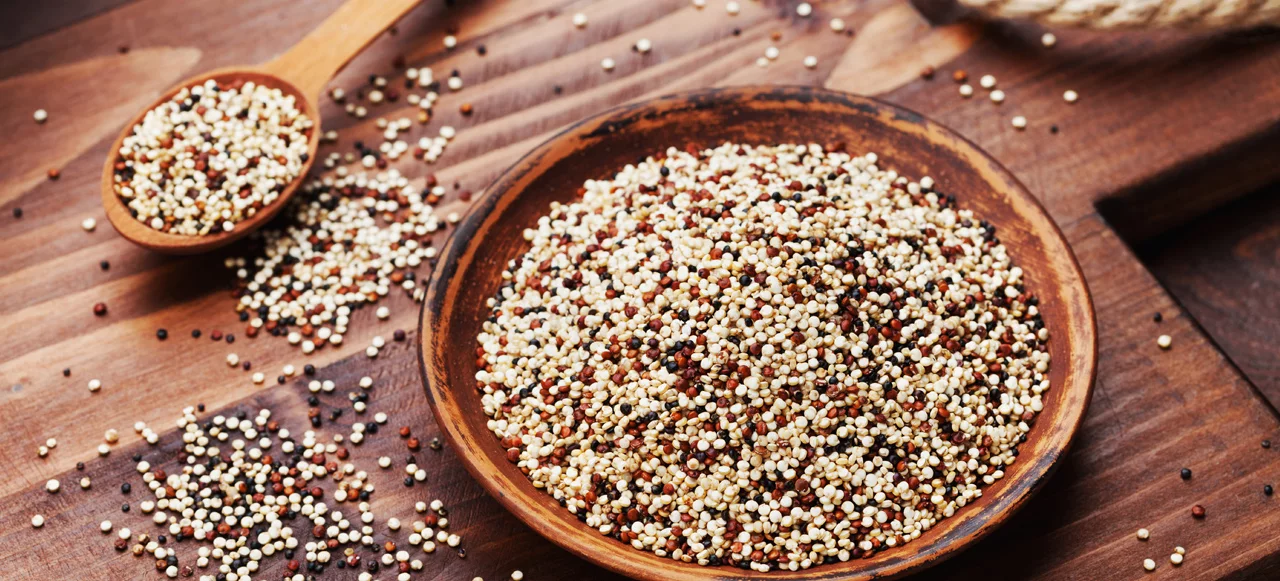Long Term Grain Storage: How Long Can Grains Be Stored? (Wheat, Corn & Quinoa)

Whether you grow your grains or buy them in bulk, the correct long term grain storage is vital if you want to maintain their quality and longevity. We tend to think grains and flours are shelf-stable dry foods and last a very long time just sitting in storage, but that isn’t necessarily true!
Many factors can affect the quality of your grains, and it can be easy for moisture and temperature to get just a little too high, resulting in your beautiful bounty of grain becoming moldy and unusable. Whether you use them regularly or are storing them as emergency food, the last thing you want is for them to go bad when you need them.
Long Term Grain Storage Guide
While different grains have different food storage requirements, they can all be stored long term when you keep a good balance of moisture, temperature, and light while keeping them out of reach of bugs or pests. The last thing you want is an infestation! Maintaining this balance can be done with proper long term grain storage containers and placement.
4 Tips for Storing Grains Long Term
No matter what your grain of choice is, you can store it for a long time with the right containers and storage methods.
Here are a few tips that you can use for storing grains long term:
1. Check for Quality
Before you even gather your grains for storage, it’s important to monitor them for quality. If you grow them yourself, sort through the grains to look for any cracked or damaged grains and pick them out. Cracks in the grain pericarp create pockets where fungus can easily grow and damage your whole batch.
If you buy your grains from the store, try to source them from a local grower/farmer and check the sell-by dates to make sure you’re getting the freshest grain possible.
Additionally, you can get grain from bulk bins at the store. But, verify that the store has a high grain turnover rate so you can be sure that the grains haven’t been sitting in the bins for a long time.
2. Properly Dry Grains
Ensuring your grains are dried properly before storing them long-term is important if you buy them from the store, but it’s even more vital when you grow them yourself.
You can do weight tests to check the moisture level of your grains, and cross-reference the levels with a grain moisture chart to make sure you’re at the correct level for the type of grain and type of storage you intend to use.
3. Bulk Grain Bags

Before you collect your new grain for storage, you need the right type of storage container. Bulk grain bags are a great option because they come in many different sizes, are easily stackable, and come in materials that are pest resistant.
Be sure to thoroughly clean your bulk storage bags before adding your grain. This helps to remove any dust, dirt, or bugs that might be sitting in the container and could spoil your fresh grain.
4. The Less Light the Better
Light is another major contributor to mold growth, so storing your grain in a dark place or a light-proof container – like a plastic bucket – is necessary if you want it to last a long time.
While it may be tempting to store your grains in the basement or shed as a low-light place, make sure you’re considering all the other factors of spoilage like temperature and moisture. You need to monitor all three to keep your grains usable as long as possible.
How Long Can Grains be Stored?
When properly stored and monitored, grains can last for 8 to 12 years! However, many factors can affect the storage life, so it’s important to monitor your storage area and check your grains regularly.
Keeping grains this long is much easier when you store them in smaller quantities because it is easier to control the environment. However, that doesn’t mean you can only keep a few ounces at a time. You can still store several pounds of grain long-term with the proper containers.
When it comes to storing bulk amounts that you’ve grown and intend to sell, your grain will be shelf-stable for much less time because it is difficult to control the temperature and moisture within massive grain containers. Typically, agricultural bulk grains will last between 6 and 12 months with close monitoring and proper storage facilities.
Long Term Corn Storage Guide

Corn is one of the longer-lasting grains, and for that reason, it is very popular to both grow and buy kernels in bulk for long-term storage. When properly stored, long term corn storage can be good for upwards of 12 years!
4 Tips on Storing Corn Long Term
Corn is categorized as a hard grain, which means it has a thick outer shell that helps to strengthen the grain against damage and environmental changes. When properly dried, corn will not hold or absorb moisture as easily and will last a very long time in dry, dark conditions.
Check out these corn long term storage tips to get the most out of your corn:
1. Make Sure Your Corn is Dry
Corn is packed with water when it’s fresh off the stalk. If you’re growing it yourself, you must make sure it’s dehydrated down to at least 15% moisture content before placing it into long-term storage. Again, you can reference moisture charts to see what moisture level you need your corn to be at so it will last in your chosen storage place.
2. Level Your Corn
Whether you are storing corn in massive quantities, or in bulk containers, it’s important to level the corn to ensure it can properly aerate and keep the moisture and temperature levels even throughout the grains. This can also help to remove any fines from your corn, which also mitigates temperature fluctuations within the grains.
3. Source Locally Grown
If you’re not growing corn yourself, it’s a great idea to source locally grown corn. This makes it much easier to verify that the grain you’re getting is as fresh as possible and of the highest quality. Remember, the high-quality freshly dried grain will always last longer on the shelf than cracked, old grain.
4. Choose the Right Type of Corn
Finally, selecting the right type of corn for your needs can help you determine how long it will last in long-term storage. For example, dent corn, which is commonly used to make Massa or corn flour, can last upwards of 20 years when stored in airtight containers and kept in a cool place.
Conversely, dehydrated sweet corn may only last a few years, but it can be easily rehydrated and used similar to fresh corn.
How Long Can You Store Corn For?
In perfect conditions, corn can last 15 years or more. However, with temperature fluctuations, it is safer to say you can keep corn in long-term storage for 10-12 years with close monitoring and environmental control.
Long Term Wheat Storage Guide

Wheat is another popular hard grain that is easy to store in bulk for years – particularly if it is kept whole or refined. However, it is more sensitive to temperature and light, so it is important to create the right long-term wheat storage methods to make it last.
3 Tips on How to Store Wheat for Long Term Storage
Whether you’re storing wheat long-term in large or small amounts, these tips can help ensure the quality and longevity of the grains:
1. Choose Berries Over Flour
The thick outer shell of wheat berries helps them last much longer than if they were ground into flour. Because of this, it is better to choose whole berries for long-term storage. However, if you plan on using your wheat for flour, you’ll need to make sure you have a way to grind your wheat berries.
2. Invest in Quality Storage Containers
For bulk storage of grains, quality containers are an absolute must. The best large options are mylar bags, bulk grain bags or food-grade buckets. All of these allow you to store bulk quantities of wheat and are airtight to help you manage moisture and pests.
If you choose storage bags, be sure to inspect them carefully to make sure they don’t have any holes, and to occasionally check your storage room for pests or signs that they may be trying to get into the bags. If you choose gallon buckets, it’s still a good idea to check the condition of the grain periodically.
3. Control Pests
Before you even think about putting large amounts of wheat in your storage space, carefully check for bugs or signs of rodents. These are your two worst enemies when it comes to keeping your grain for a long time. Making sure you don’t have an issue first will help you keep them out once your wheat is there.
How Long Does Wheat Last in Storage?
Similar to corn, the shelf life of wheat is about 8-12 years when stored in an airtight container in a cool, dry place. It is still important to regularly check your storage space and containers to monitor the quality of the wheat and to be sure it hasn’t spoiled or been invaded by pests.
Does Wheat Go Bad?
We seem to think that wheat can last indefinitely. It’s a dry good, and as long as it doesn’t get wet and moldy, why shouldn’t it last forever? Yes, wheat does have a long shelf life. However, like all other grains, it can go bad.
If you’re lucky, it will simply get stale and the quality of flavor and nutrition will be significantly lacking. However, if the wheat is not stored in a cool, dry place, it can start to spoil and either sprout or grow mold.
How to Store Wheat Berries Long Term
With the right preparation and storage conditions, wheat berries can be a great long-term grain to store. Here are the steps you’ll need to take to store your wheat properly.
- Be sure to thoroughly clean and dry the berries, removing any fines or damaged berries.
- Clean out storage containers of any old grain, dirt, or bugs.
- Level grains after they’ve been placed in their containers.
- Place in a dark, cool area that is free of moisture.
- Check on the wheat periodically for spoilage or pests.
Guide on How to Store Quinoa Long Term

Quinoa is another popular grain because of its high nutritional value, but it is also in high demand and can be quite expensive to keep in stock. Long-term storage of quinoa takes just as much, if not more, effort than other grains – but it’s worth it!
4 Quinoa Long Term Storage Tips
Storing quinoa long-term can be more difficult, but here are a few tips to increase your success.
1. Keep Moisture LOW
Soft grains like quinoa are evolved to sprout easily with little moisture, so it is vital to make sure your grains are properly dried before they go into storage and that they’re kept in a very dry environment.
2. Remove As Much Oxygen As Possible
Quinoa is high in oils, which means it can spoil much faster than wheat or corn. To help the grains last long term and maintain the nutritional quality, use containers that are compatible with a vacuum sealer or use oxygen absorbers in your airtight containers.
3. Keep Cool
Cool, dry storage is vital for keeping quinoa usable for years. The goal should always be to keep your storage space at or below 70 degrees Fahrenheit so the grains don’t sprout and mold doesn’t grow.
4. Keep Saponin Intact If Possible
While it is very difficult to find quinoa that has not already been cleaned of its saponin layers at the grocery store, if you can get it with the saponin intact, that will help protect the grains and allow them to last longer.
If you grow your quinoa and want to store it long-term, wait to clean the shell off until you are ready to use it. Be sure to thoroughly dry the grain and store it intact in airtight containers for optimal longevity.
How Long Can Your Store Quinoa For?
Some claim that quinoa can be stored long-term for over 20 years, but it is very difficult to manage the right conditions to make your grains last this long. In good, glass containers, your quinoa can last for upwards of 8 years.
How Long Does Grain Last: Final Points
With the proper storage methods and containers, grain can last anywhere from several months to several years! In bulk grain storage, using high-quality containers and keeping a close eye on moisture, temperature, and light will make a huge difference in how long your grain lasts.
Moisture levels can mean grain in long-term storage will either last weeks or years. A grain moisture chart can help you see what moisture percentage you’ll need for your chosen grain and storage temperature.
Additionally, investing in agricultural bulk bags or food-grade buckets will help you control airflow and pests getting into your grains. You don’t want all of your hard-earned grains to go to the bugs or rodents, so it’s important to do what it takes to keep them out of your storage containers. Preparedness is key.
Most importantly, don’t put your grains in long-term storage and forget about them. Every few weeks, check your grains for spoilage, mold, or pests so you can be positive the grain will be delicious and nutritious when you’re ready to use it.
Bulk Grain Storage FAQs
Can Grain Be Stored for Years?
Grain can be kept for several years in home storage as long as you keep a close eye on the temperature, moisture level, light, and possible pest issues.
That being said, you shouldn’t simply leave your grains unattended for years on end. Periodically check on them to make sure they’re still looking and smelling good so you have them when you need them.
What Grains Are Best for Long-term Storage?
Hard grains are the best to store long-term because they are less likely to be affected by changes in moisture and temperature. Grains like corn and wheat are ideal, and with the right conditions, they can last for over 10 years!
Can Grain Be Stored for 7 Years?
Yes! Depending on the grain you choose and in what quantity you’re storing them, they can last for 7 years. To keep your grain lasting as long as possible, it is best to store it in batches such as in agricultural bags or buckets. This will help you control the environment the grain is in, and will make it so if one batch spoils, you won’t lose all of your grains.





